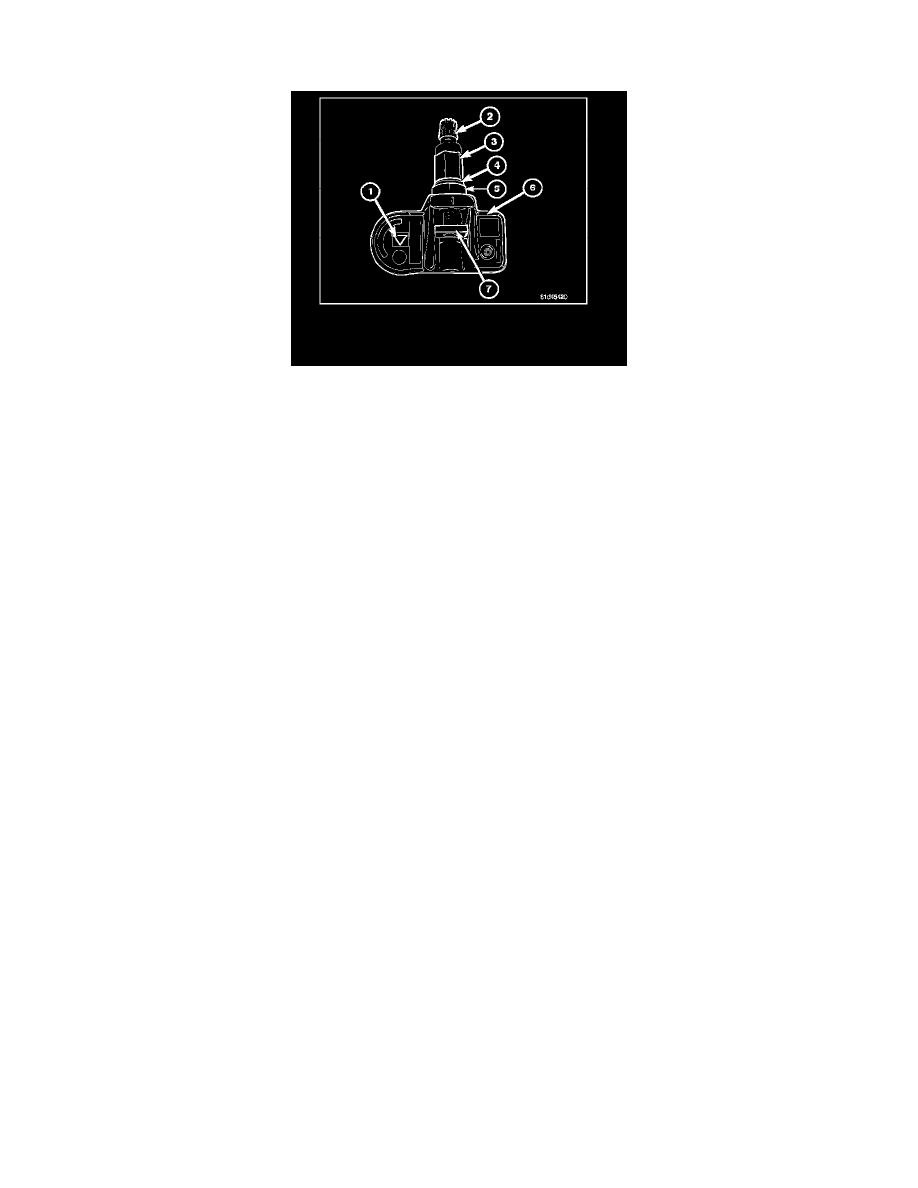Raider 2WD V6-3.7L (2008)

Tire Pressure Sensor: Description and Operation
SENSOR - TIRE PRESSURE - DESCRIPTION
On vehicles equipped with Tire Pressure Monitoring System, one tire pressure sensor (6) is mounted to each wheel in place of the traditional tire valve
stem. Each sensor has an internal battery that lasts up to 10 years. The battery is not serviceable. At the time of battery failure, the sensor (6) must be
replaced. The TPM system operates on a 315 MHz radio frequency.
The 315 MHz sensors can be easily identified by a GREEN sensor body, with (an triangle insignia) (1). The 433 MHz sensors can be identified by a
grey sensor body with an oval insignia. For car applications, there is a 315 MHz TPM sensor with a Black sensor body with an oval insignia.
NOTE: This vehicle uses the 315 MHz TPM sensor with the GREEN sensor body. Although 315 MHz and 433 MHz sensors are identical in size and
shape, they are not interchangeable. Always make sure the correct color sensor is being used. A RKE-TPM Analyzer can be used to determine the
sensor's frequency without having to dismount the tire.
The TPM sensors are designed for original style factory wheels. It is not recommended to install a tire pressure sensor in an aftermarket wheel. (This
could cause sealing and system performance issues.)
The serviceable components of the tire pressure sensor are:
^
Sensor-To-Wheel Seal (4)
^
Valve Stem Cap (2)
^
Valve Stem Core
^
Valve Stem Nut (3)
The valve stem caps and cores used are specifically designed for the tire pressure monitoring sensors. Although similar to standard valve stem caps
and cores, they are different. The valve stem cap has a special seal inside to keep moisture and corrosion out. The valve stem core has a special nickel
coating to protect from corrosion.
SENSOR - TIRE PRESSURE - OPERATION
CAUTION: The TPMS has been optimized for the original equipment tires and wheels. TPMS pressures have been established for the tire
size equipped on your vehicle. Undesirable system operation or sensor damage may result when using replacement equipment that is not of
the same size, type, and/or style. After-market wheels can cause sensor damage. Do not use aftermarket tire sealants or balance beads if your
vehicle is equipped with a TPMS, as damage to the sensors may result.
CAUTION: After inspecting or adjusting the tire pressure always reinstall the valve stem cap. This will prevent moisture and dirt from
entering the valve stem, which could damage the Tire Pressure Monitoring Sensor.
CAUTION: Tire pressure sensor valve stem caps and cores are specially designed for the sensors. Due to risk of corrosion, do not use a
standard valve stem cap or core in a tire pressure sensor in place of the original equipment style sensor cap and core.
CAUTION: Any time a sensor is to be reinstalled in a wheel, a new seal, nut, cap and valve core must be installed on the stem to ensure air
tight sealing.
NOTE: TPM thresholds have been established for the original tire size equipped on the vehicle. Use original size tires only to maintain system
accuracy.
The battery operated tire pressure sensor is both a transmitter and a receiver. The TPM sensor can be forced to transmit if using a special tool such as
a TPM-RKE Analyzer, or from a transponder. The TPM-RKE Analyzer has the ability to change the sensor mode and to diagnose a faulty TPM
sensor. Using a TPM-RKE Analyzer can take up to a minute to force a transmission from a sensor.
The High Pressure TPM sensor can be in one of the following modes:
